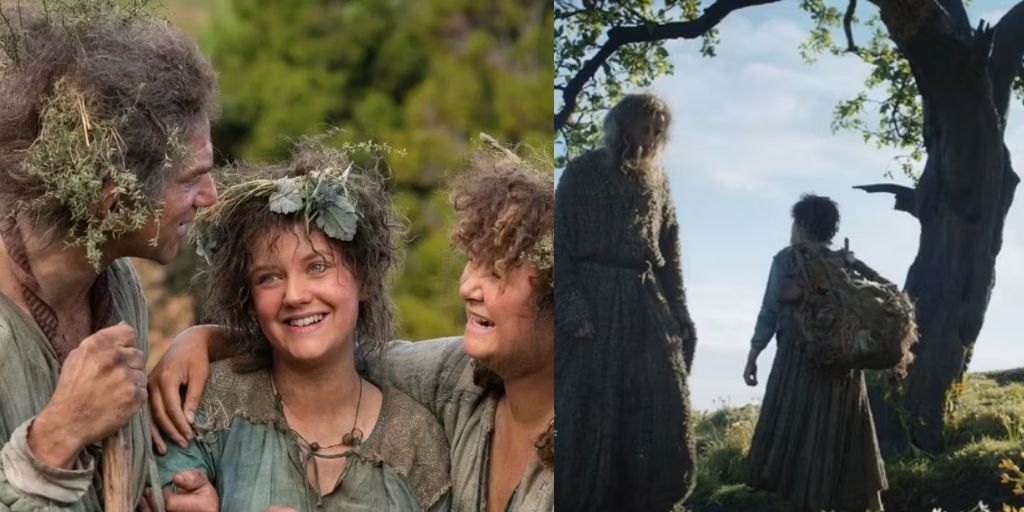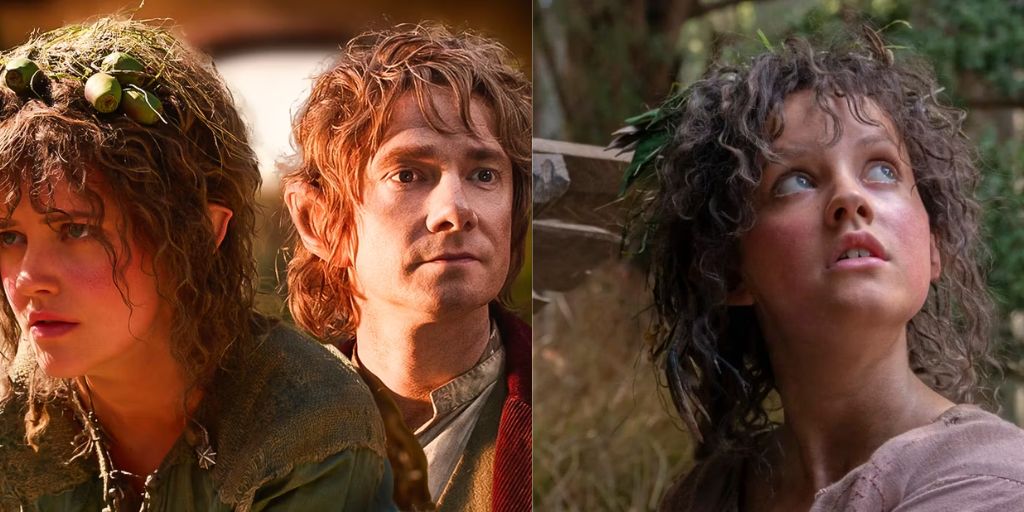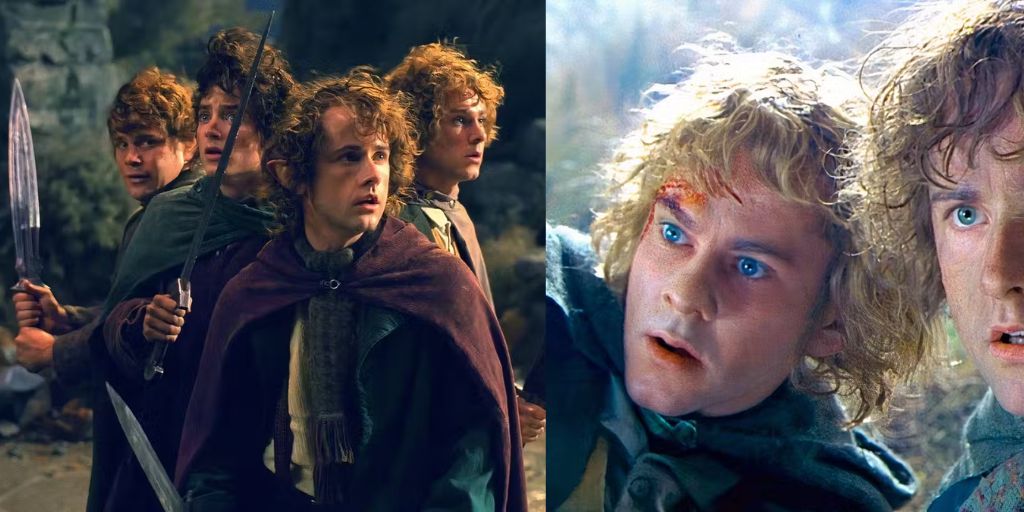When The Lord of the Rings: The Rings of Power premiered on Prime Video in 2022, viewers might have been puzzled by the Harfoots. Although they were not called Hobbits, they were the same size as the characters we know from The Lord of the Rings films.
The Shire was missing, and Nori Brandyfoot (Markella Kavenagh) seemed to take on Frodo’s role as the main halfling. J.R.R. Tolkien mentioned that Harfoots eventually settled in Bree, a key location where many Hobbit groups began. This raises the question: What sets Harfoots apart from Hobbits? Let’s show their unique characteristics.
What Are Harfoots?
Tolkien did not reveal much about Harfoots. It’s unclear if he knew all the details or simply chose not to include them. However, he did mention Harfoots early in his writings about Middle-earth. In the prologue of The Fellowship of the Ring, titled “Concerning Hobbits,” Tolkien first introduced the origins of the Hobbit people.
He described the Harfoots as the ancestors of the Hobbits we know today. Tolkien wrote, “The Harfoots were browner of skin, smaller, and shorter, and they were beardless and bootless.
Their hands and feet were neat and nimble; and they preferred highlands and hillsides.” The name Harfoot comes from the Old English words hǣr-fōt, which means “hair” and “feet,” referring to their notably hairy feet.
Tolkien identified three types of Hobbits: Harfoots, Stoors, and Fallohides. Harfoots were the smallest and preferred highlands and hills.
Stoors were larger and lived in flatlands near rivers. Fallohides had fairer skin and hair, were taller, and typically lived in woodlands. Among these, Harfoots are the most detailed in Tolkien’s writings, which is likely why they are prominently featured in The Rings of Power.
Harfoots’ Nomadic Lifestyle
A major difference between the Hobbits of the Shire and the Harfoots is their way of life. The Hobbits in Hobbiton live a settled, communal life. They enjoy comfort and rarely leave their land. The Shire serves as a home base, and its inhabitants seldom venture beyond its borders.

Only a few Hobbits, like Bilbo, Frodo, Sam, Merry, and Pippin, are known to have shown the wider Middle-earth in the Third Age. This contrasts with the Harfoots, who had a very different approach to life.
In The Rings of Power, Harfoots are shown living a nomadic lifestyle. They are always on the move and do not stay in one place for long. They travel with wagons, and if a wagon falls behind, there is no communal support to help.
Throughout Season 1, we see Harfoots telling stories and singing about those they have lost, sometimes even finding humor in their losses. This is quite different from the Third Age Hobbits of the Shire, who are more likely to help each other in times of need.
Tolkien’s writings offer a different view of the Harfoots’ way of life. He mentioned that they moved westward and roamed Eriador. He wrote, “They moved westward early, and roamed over Eriador as far as Weathertop while the others were still in Wilderland.”
Tolkien described them as the most typical Hobbit type and the most numerous. He also noted that Harfoots were more inclined to settle in one place and preserve their habit of living in tunnels and holes. This aspect of Harfoot life might be introduced later in The Rings of Power.
Harfoots’ Future and Integration into the Shire
Eventually, the Harfoots traveled north to Bree, where they settled alongside a small group of Fallohides. Over time, these groups intermarried, leading to the creation of the Hobbits we recognize from The Hobbit and The Lord of the Rings.
By the Third Age, the Shire was settled by these combined groups. The terms Harfoot and Fallohide faded, and “Hobbit” became the primary term used. Despite this merging of names, certain traits from the Harfoots persisted.
Tolkien noted, “Even in Bilbo’s time the strong Fallohidish strain could still be noted among the greater families, such as the Tooks and the Masters of Buckland.” This suggests that the Harfoots had a significant impact on the Hobbits who would later play crucial roles in Middle-earth.
The connection between Harfoots and the Hobbits of the Third Age, including those featured in The Lord of the Rings, highlights an interesting evolution.
This transformation from Harfoots to Hobbits shows how the small, nomadic people eventually became the more settled Hobbits of the Shire, who would go on to have important roles in Middle-earth’s history.
The depiction of Harfoots in The Rings of Power might not fully align with Tolkien’s descriptions, but it adds depth to their story. The evolution of the Harfoots into the Hobbits we know today underscores the rich history of Middle-earth and the enduring appeal of these characters.

Season 2 of The Lord of the Rings: The Rings of Power is now streaming on Prime Video, with new episodes available every Thursday. This season continues to show the fascinating journey of these characters and their role in Middle-earth.
The transition from Harfoots to Hobbits illustrates a fascinating evolution in Middle-earth’s history. Initially, Harfoots were nomadic and distinct from the settled Hobbits of the Shire. Their journey north to Bree and eventual integration with Fallohides marked the beginning of the Hobbit lineage we know today.
While The Rings of Power presents a unique take on Harfoots, Tolkien’s writings highlight their important role in the development of Hobbits. The ongoing exploration of Harfoots in the series adds depth to their story and connects to the rich scheme of Middle-earth’s past, enhancing our understanding of these beloved characters.





